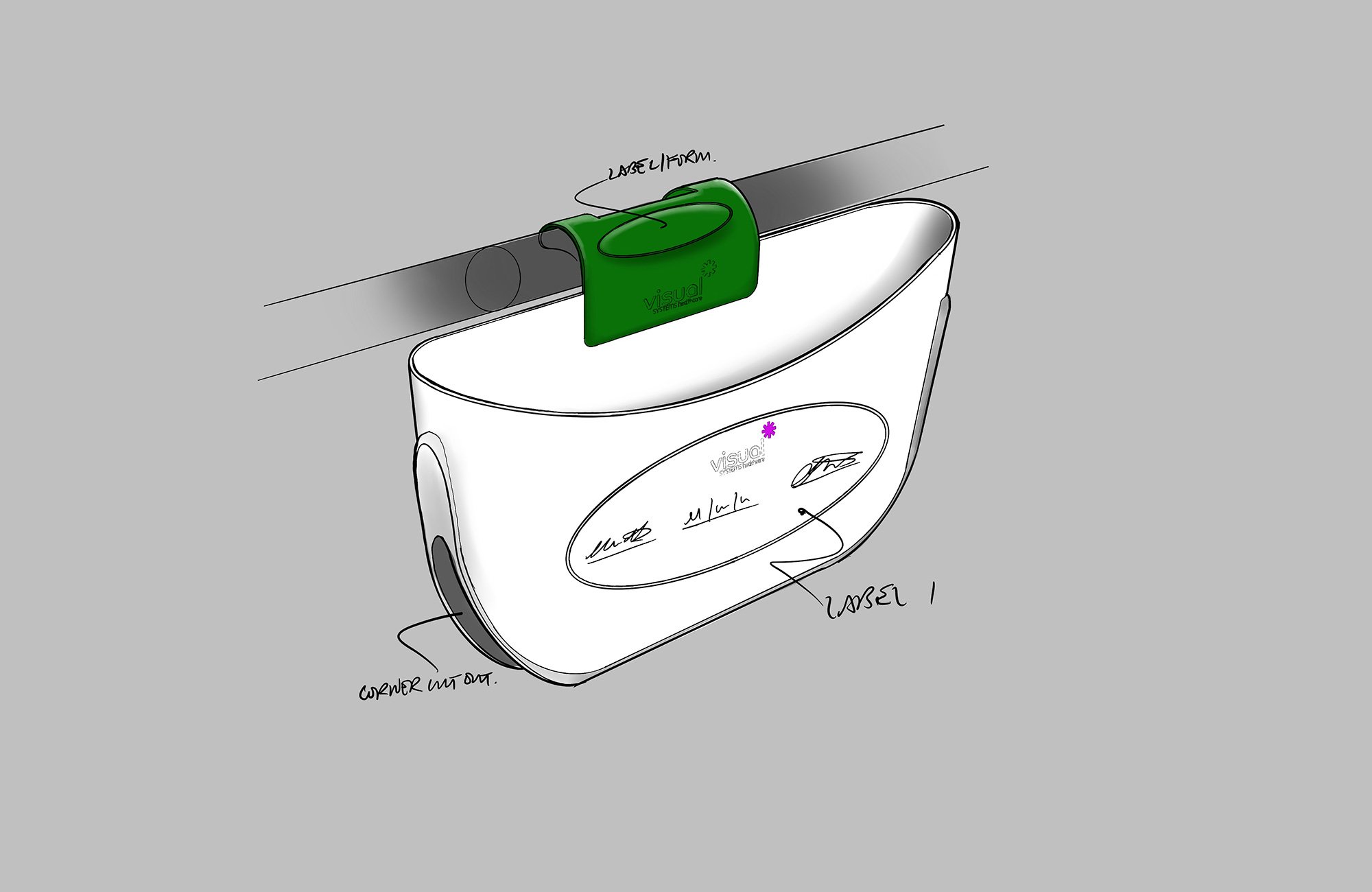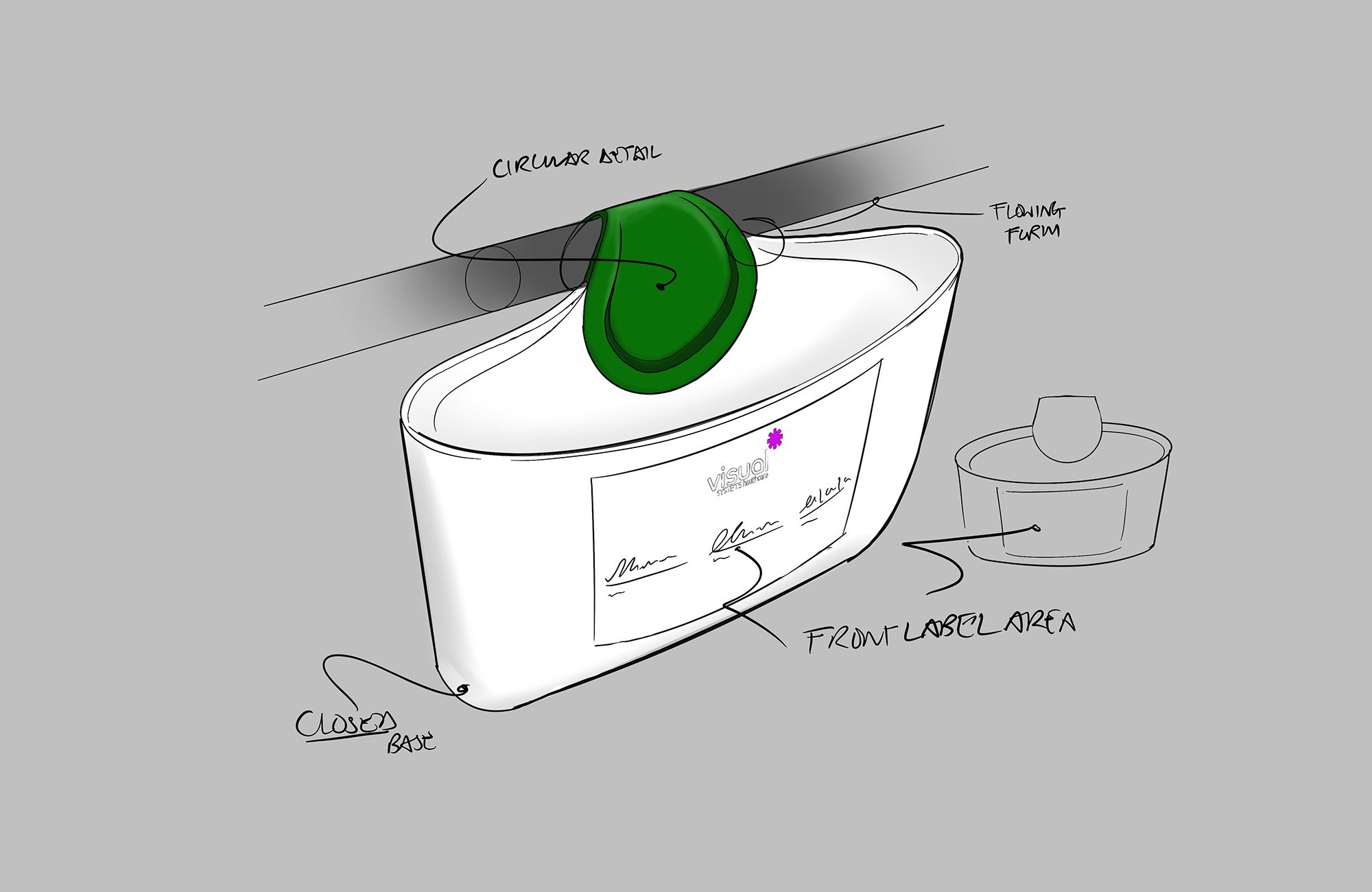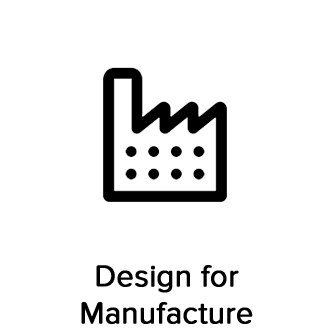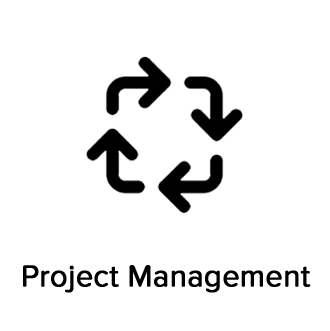Visual Systems Healthcare (VSH) are a leading UK manufacturer of patient record holders for both the NHS and private healthcare. They asked us to help refresh and upgrade their current record holder product line to a singular more flexible solution; one that not only looked good but functioned well too.
They were looking for a single solution with two functions: to mount on a wall, or to hook on the frame at the end of hospital bed. It had to be user friendly, easy to wipe clean, hold A4 folders and electronic tablets, with room for a wipe-clean adhesive label. VSH also requested it to have a modern aesthetic, be durable, fit all hospital bed frame types, and be adaptable for both mounting options.
Wall-mounted record holder
And one that hooks on to the frame of hospital bed
After an initial consultation period we created a design brief and mapped out a full product development process, with a series of work packages. The first of which was to come up with some initial design concepts, sketching several options to share with the client until we had agreed on the final ‘hook and pouch’ idea to take forward.
This then phased into CAD modelling: working from the sketches to precisely plot out its proportions, considering the various different items it would need to hold, and how multiple record holders might nest together.
To test our thinking, we 3D printed an initial prototype. This in itself was not as straight-forward as you’d think, 3D printing in high fidelity is brittle; and because of its size, we had to combine two forms of 3D printing (SLA and FDM) to generate a full-size working model.
FDM 3D printed 1:1 prototype
Although the materials used for manufacture the unit wouldn’t break, the brittle nature of 3D printing caused some difficulties
A phase of continuous development and testing followed. Particular attention was given to the clipping and unclipping of the hook from the main pouch, so it could easily change from being wall-mounted to hanging on a bed frame, but also so it didn't come apart when in use. We tested the prototypes on various types of hospital bed frame, under weights, and drop tested them.
To test the nesting pattern, we 3D printed several 10:1 scale models
Next phase: Design for manufacture. With a finalised CAD drawing and prototype models in hand, we visited a UK based injection mould tooler to discuss manufacturing and specify materials and finishes.
A few months later we received the T0 (first-off injection mould) samples. These were then further analysed, tested and perfected, by trialing different polymers and injection settings.
The first-off injection mould (T0) samples
““I’ve really enjoyed the process. Being a sales guy, I thought it would be too technical, but Pd-m made it easy, holding my hand from start to finish. From the early sketches to rendering and 3D prototypes, the communication was simple and clear; with informative PDF updates throughout the journey, which were great for me to share with my own team.
Overall, it’s been a very positive experience. Following our simple brief, Pd-m did their own research and talked confidently, with guidance of raw materials and excellent 3rd party liaison, raising questions that I wouldn’t have thought about - saving significant time and cost. Everything was done within budget, and the timescales were on target. I would happily do it all again.””
““Having worked alongside Pd-m on this redesign project, the whole process exemplified Pd-m’s approach to excellence and attention to detail. It was a delight to work with Richard and Pippa, their commitment to the success of project was a pleasure to witness. Not only do they bring design attributes but also commercial awareness – which is invaluable!””




































